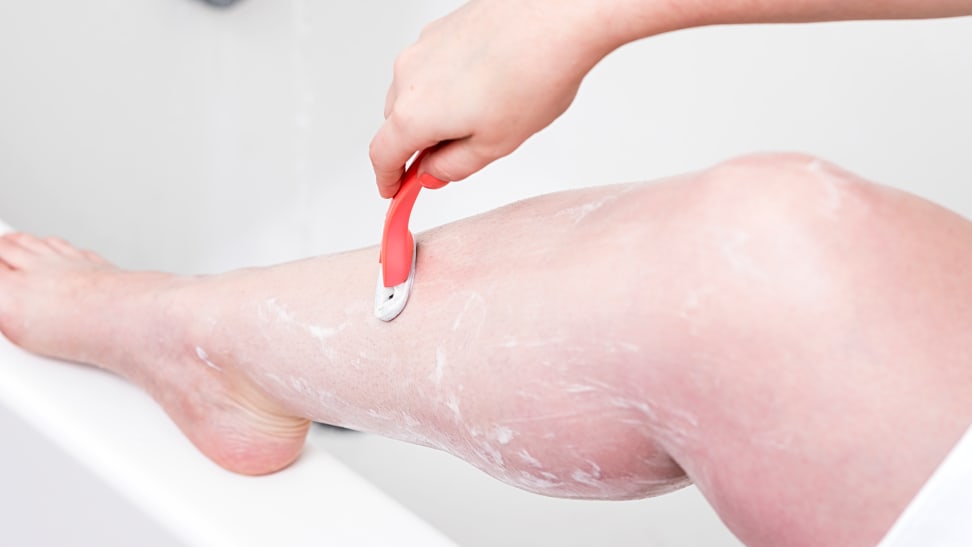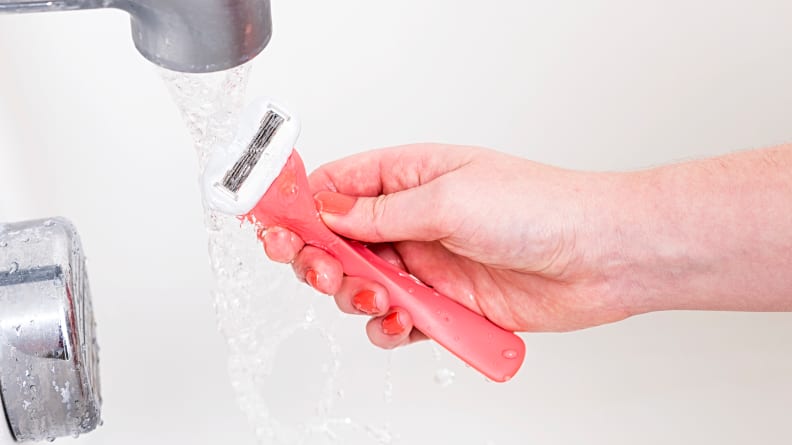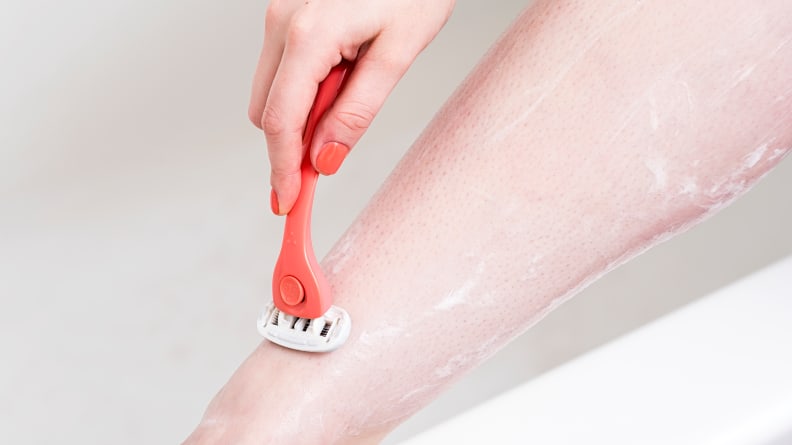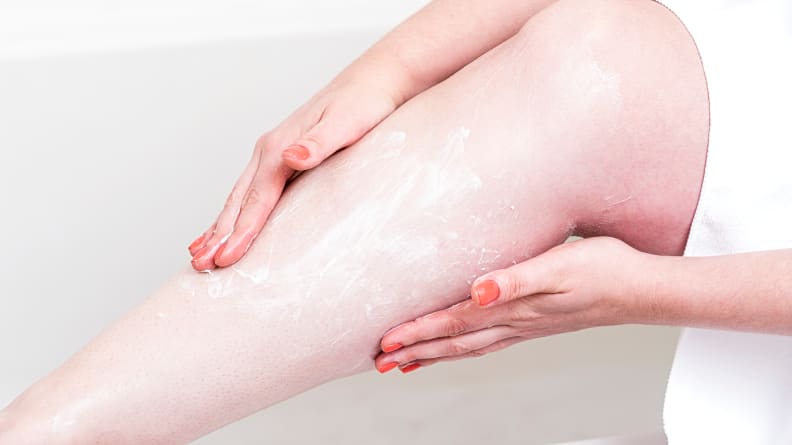Yes, there is a right way to shave your body—here's how
A dermatologist explains the step-by-step process to smooth, nick-free body shaving
 Credit:
Reviewed / Jackson Ruckar
Credit:
Reviewed / Jackson Ruckar
Products are chosen independently by our editors. Purchases made through our links may earn us a commission.
Have you ever taken your time shaving your legs, arms, underarms, or chest in the shower only to notice tiny nicks or painful, unsightly red bumps when you towel off? Avoiding razor burn (that red post-shave irritation) and cuts is possible, but it takes some practice and following a few guidelines. We spoke with a dermatologist to learn how to prevent aggravating the skin when all you really want is a smooth, sleek shave.
Step 1: Say yes to warm water

Warm water softens your hair and skin while opening up your hair follicles.
Cool showers are great when the weather is warm or after a tough workout, but if you’re planning on shaving, always opt for warm water. This softens the hair and skin and opens up the hair follicles. “[Warm water] is relaxing to those arrector pili muscles (responsible for our goosebumps), which are surrounding the follicle,” says Dr. Suzanne Friedler, a board-certified dermatologist with Advanced Dermatology PC. When the hair is softer, it’s easier to manipulate and you’re more likely to get a close, even shave.
Step 2: Avoid exfoliating prior to shaving
There’s a longstanding belief that exfoliating before shaving is the best practice because it removes any dirt, oil, and dead skin to give a clean slate before you put your blade down. These proponents typically suggest using physical exfoliants such as body scrubs or sponges. But these can be irritating to the skin, and even cause small microtears that you shouldn’t shave over, lest you cut them open even more. Friedler recommends not exfoliating at all, especially since your razor exfoliates your skin anyway (more on that in a moment). But if you’re going to exfoliate, she suggests doing so after you shave. “You don’t want to irritate the skin prior to shaving,” Friedler says.
Step 3: Use a shave cream or oil

A lubricant, such as shave oil or cream, is necessary for a smooth glide.
The non-negotiable to shaving is using a lubricant. Without one, there will be friction between your skin and the blade, which can lead to microtears (there’s that word again!), visible nicks and cuts, or razor burn. Microtears, which are exactly as they sound (microscopic tears in the skin), can expose us to bacteria, and in turn, irritation and infections. “You need some kind of lubricant, whether it be a foam or an oil, so that when you do go to shave, there’s a good glide,” Friedler says. That product will reduce the friction and hopefully limit any injuries to the skin. Specialized shaving creams and foams are one way to go, but shower gels and even hair conditioner can work in a pinch.
Step 4: Choose the right razor
There isn’t a wrong razor, in terms of the brand or type, necessarily. Friedler says that whether you choose a two-blade or a five-blade is all in your preference. But there’s no doubt that “using a fresh blade is definitely helpful.”
A dull razor blade can cause ingrown hairs or razor burn and is more likely to nick you than a sharp blade, and rust on a razor is a pretty obvious sign that it’s old and likely dull. When you choose a blade that works for you, make sure to replace it as often as instructed or more frequently depending on how often you shave. If you’re removing hair from larger swaths of your body or hair that is coarse, you may need to replace your blade as often as every three to five shaves. In general, though, if you feel any tugging or pulling on the hair as you shave, or (yes) notice signs of irritation on your skin post-shave, it’s time for a blade change.
Step 5: Finish with moisturizer

Moisturizing replenishes the hydration that your skin lost from shaving.
We’re all guilty of jumping out of the shower and either throwing on clothes to go out or to hop right into bed. Moisturizing skin post-shave is a good practice to get into, though. “Warm water will drain away your natural skin oil and the process of shaving your skin is exfoliating in and of itself,” Friedler says. “When you’re shaving, not only are you taking away the hair, but you’re taking away some of those dead skin cells, too.” The dead skin cells that your razor likely removed, along with the hair and any natural oils you built up, acted as the skin’s barrier before. When you put on a moisturizer, you’re replenishing your skin’s hydration and rebuilding a barrier between the skin and outside bacteria, which could cause irritation or infection.


